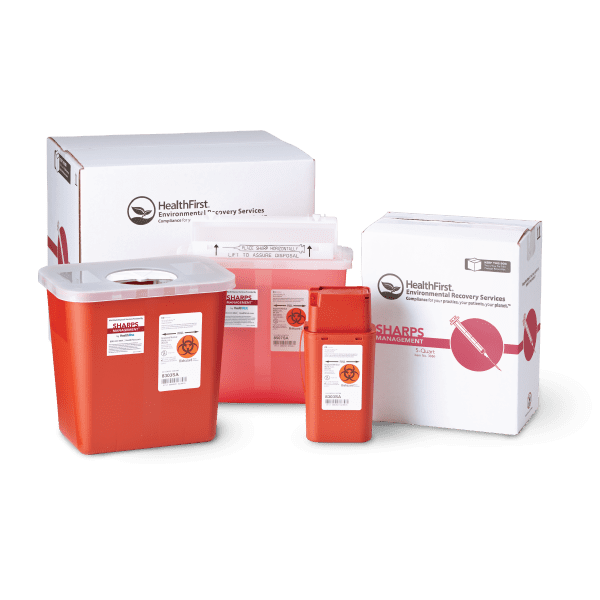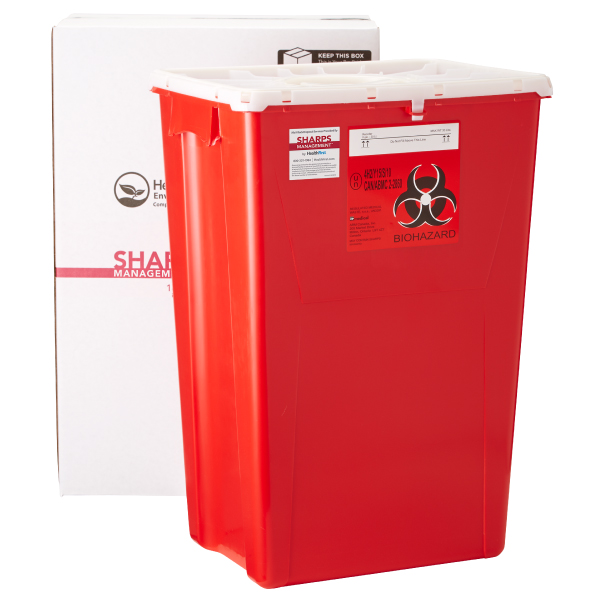Comprehending the Various Types of Waste Disposal Methods
In the world of waste management, the range of disposal methods readily available today is vast and varied, each technique serving a distinctive purpose in dealing with the difficulty of garbage disposal. click here. From recycling approaches that aim to offer brand-new life to products, to the intricate processes of contaminated materials management, the landscape of waste disposal is complicated yet crucial for environmental sustainability. Comprehending the nuances of these various methods not just clarifies the relevance of responsible waste management but likewise motivates us to rethink our strategy towards garbage disposal in a rapidly developing globe

Recycling Techniques
Recycling approaches are essential for sustainable waste monitoring methods in both domestic and commercial setups. medical waste removal service. By implementing reliable recycling techniques, a significant quantity of waste can be diverted from land fills, saving all-natural sources and decreasing the ecological impact of manufacturing processes
In houses, curbside recycling programs play an important function in motivating homes to separate recyclable products from general waste. Products such as paper, plastics, glass, and steels can be sorted and accumulated for processing right into new items, decreasing the demand for resources and energy-intensive production procedures.
Industrial facilities additionally rely upon recycling approaches to minimize waste generation and promote a round economy. By carrying out closed-loop systems, businesses can reuse products within their production processes, minimizing costs and environmental impact. medical waste removal. Additionally, industrial recycling programs typically entail collaborations with specialized recycling facilities to make sure that products are correctly sorted, refined, and rehabilitated right into the supply chain
Composting Techniques

Oxygenated static heap composting includes mixing natural waste materials in a huge heap and on a regular basis turning it to ensure appropriate oygenation. This technique is efficient for large composting procedures. On the various other hand, vermicomposting uses earthworms to break down raw material into nutrient-rich castings. This technique is fit for smaller-scale operations and houses.
In-vessel composting involves placing organic waste in a closed container with controlled problems for temperature and aeration. Windrow composting consists of developing long rows of natural waste and routinely turning them to promote disintegration - medical waste removal service.
Landfill Disposal
Land fill disposal is a generally utilized approach for handling waste that can not be reused or composted. It includes hiding waste in designated areas of land, with correct precautions to stop environmental contamination. Garbage dumps are crafted facilities created to separate waste from the surrounding environment. The waste is compacted and covered with dirt day-to-day to reduce odors, hinder pests, and lessen the spread of clutter. Modern landfills are geared up with safety linings and keeping track of systems to protect against leakage of unsafe substances into the soil and groundwater. Methane gas, a by-product of disintegrating natural waste in land fills, is typically gathered and made use of as a resource of eco-friendly power. Despite developments in garbage dump innovation, worries continue to be regarding the long-lasting environmental effects, such as groundwater contamination and greenhouse gas discharges. Efforts to minimize dependence on landfills include advertising waste reduction, reusing, and exploring alternative waste disposal methods to reduce the environmental footprint associated with typical land fill disposal techniques.

Waste-to-Energy Incineration
Incineration of waste for energy generation is an approach progressively being taken into consideration as an option to traditional garbage dump disposal strategies. Waste-to-energy incineration involves the combustion of waste materials at high temperature levels, generally in specialized facilities created to create electrical power or warm via the process - click here. This method not just decreases the quantity of waste that would certainly otherwise be destined for land fills but likewise takes advantage of the heat created throughout incineration to produce power
Among the essential advantages of waste-to-energy incineration is its capacity to create electrical power while lessening the environmental influence compared to traditional garbage dump disposal approaches. By transforming waste into energy, this method assists in lowering greenhouse gas emissions and reliance on nonrenewable fuel sources for power generation. In addition, waste-to-energy centers are outfitted with innovative air pollution control technologies to alleviate possible toxic wastes released during the burning procedure.
Contaminated Materials Management

Taking into consideration the vital significance of accountable waste monitoring techniques, specifically in the realm of environmental sustainability, the focus currently moves towards the intricate domain of Contaminated materials Monitoring. Dangerous waste presents significant risks to both human health and the setting, requiring specific handling and disposal techniques. Usual examples of contaminated materials consist of chemicals, batteries, chemicals, and electronic waste.
Hazardous Waste Monitoring includes the identification, collection, transport, treatment, and disposal of products considered damaging or potentially unsafe. This procedure requires adherence to rigorous policies and standards to reduce adverse influence on communities and public health. Numerous methods are used in managing contaminated materials, including recycling, safe and secure landfills, encapsulation, and chemical treatment.
Proper Contaminated Materials Administration is essential for protecting against contamination of soil, water resources, and air pollution. It is vital for markets, laboratories, medical care facilities, and other generators of unsafe waste to implement durable monitoring strategies, training programs, and emergency situation feedback prepares to make sure the secure handling and disposal of these materials. Failure to take care of contaminated materials properly can have far-ranging consequences, highlighting the value of diligent and responsible practices in this field.
Conclusion
In final thought, garbage disposal strategies play an important duty in handling and decreasing the impact of waste on the environment. From recycling and composting to garbage dump disposal and waste-to-energy incineration, each technique has its very own advantages and constraints. Correct monitoring of hazardous waste is also necessary to secure public health and wellness and the atmosphere. It is necessary look here for people and markets to understand the different garbage disposal strategies readily available and pick one of the most ideal approach for lasting waste monitoring.
In the realm of waste management, the selection of disposal methods offered today is vast and differed, each technique serving a distinctive function in dealing with the challenge of waste disposal. click here. From recycling approaches that intend to provide new life to products, to the complex processes of harmful waste administration, the landscape of waste disposal is complex yet vital for environmental sustainability. Recognizing the subtleties of these various techniques not just loses light on the relevance of responsible waste management yet also prompts us to rethink our method towards waste disposal in a swiftly progressing world
Initiatives to decrease dependence on garbage dumps include advertising waste reduction, reusing, and checking out different waste disposal techniques to minimize the ecological footprint connected with traditional land fill disposal practices.
It is vital for sectors and individuals to recognize the different waste disposal strategies available and pick the most appropriate technique for lasting waste monitoring.